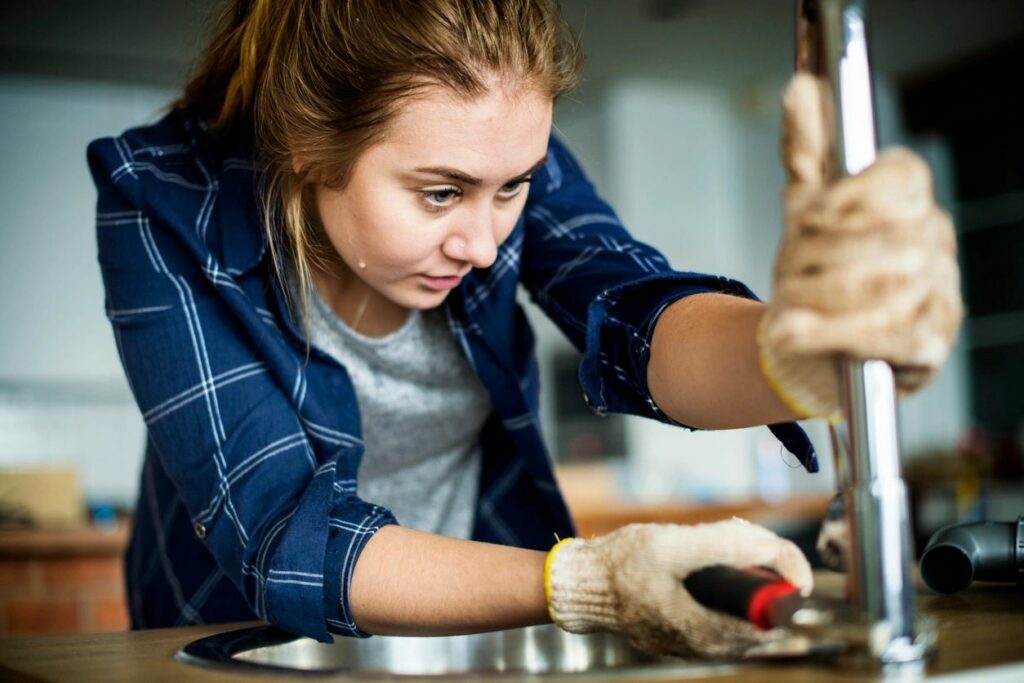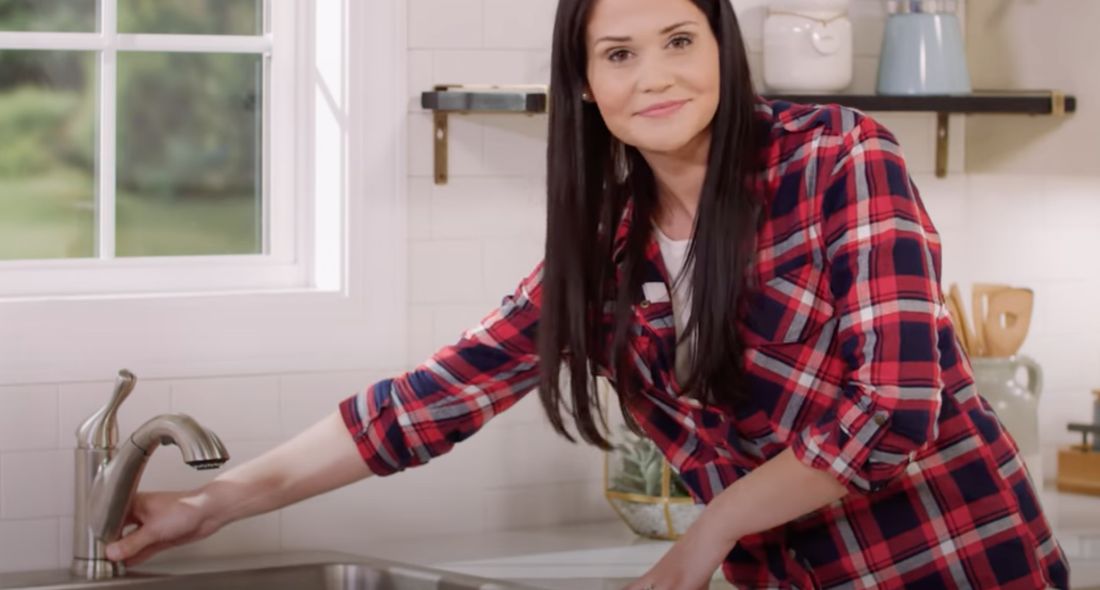An Upsides of Repairing a Faulty Faucet
An Upsides of Repairing a Faulty Faucet
Blog Article
Have you been trying to find selective information about Water Dripping from Faucet: Why and How to Fix?

Dripping taps could appear like a minor hassle, however their impact surpasses simply the inconvenience of the sound. From drainage to incurring unnecessary economic expenses and health threats, disregarding a trickling tap can result in various repercussions. In this article, we'll look into why it's essential to resolve this common household concern without delay and properly.
Wastefulness of Water
Ecological Effect
Dripping taps add substantially to water waste. According to the Environmental Protection Agency (EPA), a solitary tap trickling at one drip per secondly can throw away more than 3,000 gallons of water each year. This not just pressures water resources yet likewise impacts ecological communities and wild animals dependent on them.
Step-by-Step Overview to Fixing a Dripping Faucet
Devices Called for
Prior to trying to take care of a leaking faucet, gather the required tools, including a flexible wrench, screwdrivers, substitute parts (such as washers or cartridges), and plumber's tape.
Usual Tap Issues and Their Solutions
Identify the sort of tap and the particular concern creating the drip. Typical troubles consist of damaged washers, rusty valve seats, or damaged O-rings. Refer to supplier directions or online tutorials for step-by-step advice on repair services.
Financial Prices
Raised Water Bills
Past the ecological impact, leaking taps can inflate water expenses considerably. The accumulated waste gradually converts into higher utility expenditures, which could have been avoided with timely repair work.
Potential Property Damages
Furthermore, long term leaking can lead to damage to components and surfaces bordering the faucet. Water buildup can cause staining, rust, and also structural concerns if left unattended, leading to added repair work prices.
Health Issues
Mold And Mildew and Mold Growth
The continuous visibility of dampness from a dripping faucet develops an optimal atmosphere for mold and mildew and mold development. These fungi not only compromise indoor air high quality however likewise present wellness risks, particularly for individuals with breathing problems or allergic reactions.
Waterborne Illness
Stagnant water in leaking faucets can become a breeding ground for microorganisms and various other virus, boosting the risk of waterborne illness. Pollutants such as Legionella bacteria thrive in stationary water, possibly causing severe diseases when ingested or breathed in.
DIY vs. Professional Repair
Pros and Cons of Do It Yourself Repair Work
While some might attempt to fix a trickling faucet themselves, do it yourself repair work feature their own collection of challenges. Without correct knowledge and devices, DIY attempts can worsen the concern or result in insufficient repairs, extending the trouble.
Benefits of Employing a Specialist Plumber
Hiring an expert plumber makes sure that the underlying source of the dripping faucet is attended to properly. Plumbings have the proficiency and devices to identify and repair faucet problems effectively, saving time and reducing the danger of additional damage.
Environmental Responsibility
Individual Contribution to Preservation
Taking duty for dealing with trickling faucets aligns with more comprehensive initiatives toward water conservation and ecological sustainability. Every person's actions collectively make a substantial influence on protecting precious sources.
Sustainable Living Practices
By prioritizing punctual repair work and adopting water-saving routines, individuals contribute to lasting living methods that profit both present and future generations.
Safety nets
Routine Upkeep Tips
To avoid trickling faucets, execute routine upkeep such as cleansing aerators, examining for leakages, and replacing worn-out components promptly. Additionally, think about mounting water-saving devices or upgrading to a lot more reliable fixtures.
Value of Prompt Services
Addressing dripping faucets as quickly as they're observed protects against further water wastage and potential damage, ultimately saving both water and cash in the future.
Influence On Residential Or Commercial Property Value
Perception of Well-Maintained Residential Or Commercial Property
Preserving a building in good condition, consisting of attending to upkeep problems like dripping taps, boosts its viewed value and worth amongst prospective buyers or lessees.
Influence on Resale Value
Features with well-maintained plumbing components, consisting of faucets, command greater resale worths in the property market. Dealing with leaking taps can add to a favorable impact during residential property examinations and arrangements.
Verdict
Resolving a trickling tap goes beyond simple ease; it's an important action towards preserving water, reducing monetary prices, and safeguarding health and wellness and residential property. Whether via DIY repair work or expert help, doing something about it to deal with dripping taps is a small yet impactful way to promote responsible stewardship of resources and add to a healthier, much more sustainable future.
How to Fix a Dripping or Leaky Faucet
A leaking faucet is one of the most common problems that homeowners encounter, but it being commonplace doesn’t make it any less annoying. The constant drip drip drip of a leaking bathtub faucet, showerhead, or sink tap can disturb your home’s serenity. Left neglected, a dripping faucet can also result in higher water bills and discoloration or mold growth in your sink or plumbing fixtures.
Fortunately, you don’t have to be a trained plumber to know how to stop a dripping faucet. With some basic tools, replacement parts, and a little patience, leaky faucet repair is a breeze. In this article, we’ll explain what causes dripping faucets and how you can fix them.
What Causes a Leaking Faucet?
Kitchen and bathroom faucets come in all manner of designs, but most involve some combination of valves, O-rings, seals, and washers. The O-ring is usually the weakest link, but any one of these pieces can wear down over time. Heat, moisture, temperature fluctuations, minerals, mold, and movement can contribute to warping and corrosion, breaking the watertight seal. This just comes with the territory of being a homeowner. Everything is always subject to wear and tear, and some component parts of your appliances and fixtures need to be replaced on occasion. At least replacement O-rings are cheap!
More rarely, dripping faucets can be a symptom of excessively high water pressure. Were this the case in your home, you would probably notice that the leak is not isolated to one faucet. Water pressure issues are harder to resolve on your own. We recommend contacting a professional plumber if you suspect your water pressure is too high.
How to Fix a Dripping Faucet
Pipe wrench or monkey wrench Allen wrench set Screwdrivers Old towel or rag Shut off the water.
Before you do anything, you need to turn off the water to keep from drenching your kitchen or bathroom. You should find a valve under the sink and against the wall. Once you’ve turned this valve, try turning the faucet on to confirm that the water source has been cut off.
If you can’t locate your local valve for the faucet you’re working on, you can always shut off the water to the house at the main valve. Of course, this will prohibit anyone from using the sinks, showers, or toilets while you’re working on the faucet that’s giving you trouble.
Plug or block the drain.
You’ll be disassembling the faucet and removing some small bits of hardware. Plug the drain with a stopper or rag to avoid the possibility of a small screw falling into your P-trap.
Take apart the faucet assembly.
There are several varieties of kitchen and bathroom faucets, each with its own manner of assembly. For detailed instructions on how to disassemble your faucet, you can refer to the fixture’s manual or contact the manufacturer. If you know whether you have a ball, disc, cartridge, or compression faucet, you can find detailed schematics online.
In general, you need to begin by removing the faucet handles. You might notice a small screw that you’ll need to remove with a screwdriver or Allen wrench. If you don’t see any visible securing hardware, it’s likely hidden under a decorative cap that can be unscrewed or popped off with flathead screwdriver.
Remove each piece methodically, consulting a schematic when necessary. Take notes or arrange the pieces in such a way to make it easier to correctly reassemble the faucet later.
Remove the cartridge.
Once you’ve removed the handles and securing hardware, you should be able to remove the valve cartridge or stem. Some cartridges will slide right out. Other faucet models will require you to loosen a nut with a pipe wrench before you can remove the valve stem.
Examine the exposed hardware.
With the cartridge or stem removed, inspect the component parts. Check the rubber O-rings for wear and tear. Also examine the seat washer for corrosion or other damage. These pieces are usually the responsible parties for a dripping faucet, but it’s worth inspecting the other component parts while you have the faucet disassembled.
Find replacement parts.
Once you’ve identified which faucet component has failed, find an identical replacement. Your local hardware store should have O-rings, seat washers, and other standard components in stock. If you have a luxury or uncommon faucet, you may have to contact the manufacturer for a replacement part.
It’s a good idea to take your old parts with you to the hardware store so you can compare them with the store’s inventory and be sure you’re purchasing the correct replacement.
Reassemble the faucet.
With your new parts in hand, reconstruct the faucet and handles. Don’t be tempted to overtighten screws or nuts. You might think this could create a better seal, but it can instead damage or bend a delicate part of the assembly and create a new problem for you.
Turn on the water and test the faucet.
The only thing left to do is test your work. Unplug the sink, turn the water back on, and try the faucet. Congratulate yourself on a job well done!
https://www.libertyhomeguard.com/how-to-fix-a-dripping-or-leaky-faucet/

I stumbled upon that article on Why Are My Faucets Dripping (And Can I Fix It Myself)? when browsing on the internet. Sharing is good. Helping others is fun. Thank you for your time invested reading it.
Report this page